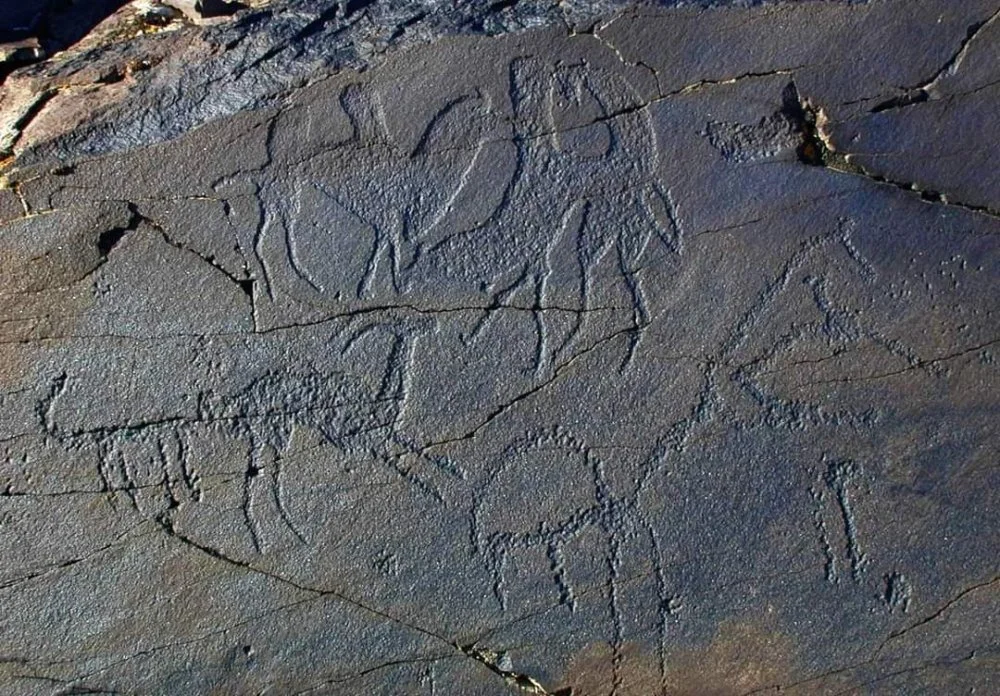In the past, caravan routes were not just pathways for people but also the exchange of ideas and meanings. A striking example of this is the scene of fighting camels from the Karatau mountains, found in the Arpaözen sanctuary in the Turkestan region.
On a vertical slab with a rich patina, two camels are depicted engaged in a fierce battle, each in a characteristic pose: one biting its opponent's leg while the other bites its rival's hump.

Fighting camels in Arpaozen/Olga Gumirova
Camel imagery was a favored motif among the peoples of Central Asia, including those who inhabited the territory of Kazakhstan from the 3rd to the 2nd millennium BCE. In Arpaözen, grand multi-figure compositions have been documented, where camels are portrayed not only as riding animals or hunting targets but also as totems or the progenitors of tribes.
According to scholars, the symbolism of the scene mentioned above conveys the strength and power of the confrontation between two forces, light, and darkness, and is presumably an illustration of the myth of Verethragna, the god of war and victory among the Indo-Iranian peoples. This deity had ten successive incarnations, including that of a camel.
But what connection could the god of war and victory have to the caravan routes? According to experts, Verethragna eventually came to be revered as the protector of travelers as well. After all, in those times, warriors often spent years on military campaigns, and the god who granted success to military units on their journeys naturally became a guardian for those traveling for peaceful purposes.

Table from the book by A.Z. Beisenov and A.N. Maryashev "Petroglyphs of the Early Iron Age of Zhetysu" in the drawing by O. Gumirova
The motif of fighting camels in petroglyphs and other media became especially popular at the turn of the Bronze Age and the beginning of the Early Iron Age (approximately the mid-first millennium BCE). This is evidenced by rock carvings found in various sanctuaries, as well as metal plaques, amulets, and bone artifacts discovered during archaeological excavations. The distances between the locations where similar thematic and narrative artifacts have been found are impressive: the cluster of petroglyphs at Arpaozen in the Turkestan region; the Pyatimary I burial site in the Orenburg region; the famous Filippovka kurgan in the Southern Urals; the Bessoba burial site, kurgan 5, in Western Kazakhstan; Togolok in Margiana, Central Asia; and the petroglyph cluster at Sulek in Khakassia.
This list could be extended. Similar scenes have been recorded by a team led by a Doctor of Historical Sciences and researcher at the A. Margulan Institute of Archaeology, in the Akkainar cluster, Almaty region, and Alabasy, Jetisu. Similar scenes may eventually be found in other sanctuaries located near ancient migration routes, as the journey in those distant times was long and dangerous, and travelers greatly relied on the support of the god of travelers.
P.S. The publication used a table from the book “Petroglyphs of the Early Iron Age of Jetisu” by A.Z. Beysenov and A.N. Maryashev, illustrated by O. Gumirova.




